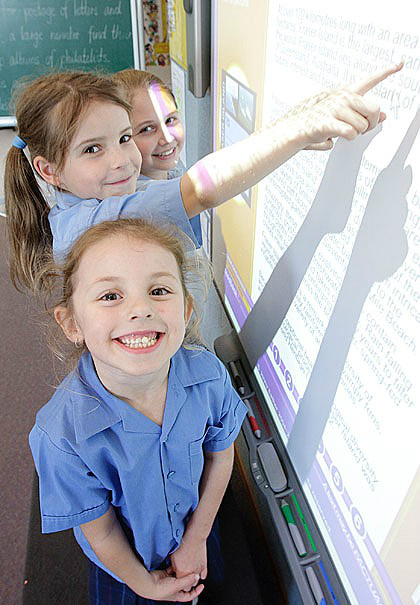Blog 1- ICT Current Trends
Technology is very important in today’s educational programs. They create critical thinking, decision-making and problem solving opportunities; enabling effective student communication and collaborative learning. Over the years, Information and Communication Technology (ICT) trends within educational programs have been slowly evolving; creating improved technology programs, software devices and tools to enhance student learning (ICT in Education is Important, 2013). Today, it is evident that “one characteristic common to all good teachers, regardless of their classroom approach, is that they are able to promote high levels of intellectual quality within their lessons” (Kent, 2010, p. 2).
This first reading has demonstrated the importance of current ICT trends and how they help develop student engagement and learning within a classroom environment. One popular way to promote high levels of intellectual quality is the use of Interactive Whiteboards (IWB), where learning is divided into four categories: labelling; sorting; ordering and sequencing; and puzzle, game and simulation (Kent, 2010).
These four categories provide a wide range of opportunities to help lead rich class discussions, allowing students to think beyond memorising particular content on the board, thus engaging more deeply with the underlying content being taught (Kent, 2010). Other multimedia sources, such as YouTube, images, diagrams and audio files can be added to IWBs to further engage students into the chosen topic through the use of visual and aural learning. IWBs can present an idea with various contexts that can be explored from within the class, and lead discussions that probe student understanding allowing students to take their own personal learning (Kent, 2010). Compared to the use of IWBs, blackboards and whiteboards have very limited uses for stimulating student engagement. IWBs allow students to watch relevant YouTube videos, play music and access URLs by the click of a button. As a future teacher, I believe that instant access to a range of multimedia sources would expand my capability to teach students with different learning styles. For example, the use of visual images could stimulate and enhance student comprehension by presenting subjects in a unique and interesting way. This will lead students to become eager to share and discuss their own opinions amongst their peers about the stimulus they had just seen.
However, IWBs are very expensive educational tools and not all schools can afford them. Therefore, teachers need to be prepared to use smaller technology tools that can produce similar outputs and plan for the possibility of not having access to IWBs.
Multimedia Used
Blog 1 uses an image and a YouTube video to demonstarte how the current ICT trends are helping student engagement in learning and understanding of evloving knowledge. The image shows three primary school students happily interacting with the Interactive Whiteboard, while the YouTube video explains the improvement that ICT has made in classrooms.
Multimedia References
- ICT in the Classroom [Video file]. (2011). Video posted to https://youtu.be/o4yZG69sm4Q
- Technology in the Classroom [Image]. (2010). Retrieved 24th May, 2013, from https://www.smh.com.au/lifestyle/back-to-school/technology-in-the-classroom-20100119-mhn3.html

